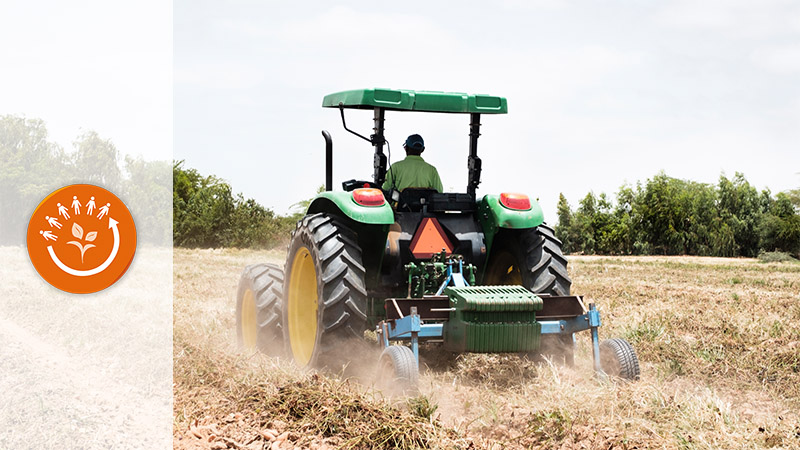
Agriculture, health and environment (Intermediate level)
Estimated duration : 5h30
The intermediate level of Route 2 (Agriculture, health and environment) consists of two activities. Each activity includes a text to read, followed by a test comprising a few simple questions to measure your mastery of the subject. At the end of the intermediate level, a summary test will be offered to you. Its results will determine your access to the advanced level.
In this first part of the journey, we will see that intensive agriculture using improved seeds, chemical fertilisers and plant protection chemicals, despite all the benefits it offers in terms of gross production per hectare, is responsible for many impacts on human health and the environment, directly or indirectly. Health impacts do not end with contaminants such as nitrates or pesticide residues that are harmful – other contaminations are possible after harvest, for example through the migration of harmful substances from packaging.
We will see that some materials are preferable to others from this point of view. Intensive agriculture also favours highly productive varieties that are less good in terms of nutritional qualities. And genetically modified crops are suspected of being harmful to health, for example by causing allergies. At the ecosystem level, the use of chemicals unbalances the environment or pollutes it, causing undesirable effects such as eutrophication of surface waters, groundwater pollution by nitrates and pesticides, and loss of biodiversity.

Agriculture, health and environment (Advanced level)
Estimated duration : 7h30
The advanced level of Route 2 (Agriculture, health and environment) consists of three activities. Each activity includes a text to read, followed by a test comprising a few simple questions to measure your mastery of the subject. At the end of Route 2, a summary test will be offered to you. Its results will determine your access to the certification test.
First, we will look at the main environmental factors, abiotic and biotic, that interact with plants and have a major influence on crop production. In addition to abiotic factors (temperature, light, water, atmospheric gases or wind), biotic factors influence crop productivity. Biotic factors include physical and chemical parameters (e.g. the action of earthworms on soil composition), and factors that result from the presence and action of other living beings. We will examine all forms of interactions between living animal and plant organisms in a given environment.
We will then look at the effects of environmental changes, in particular the effects of climate change on plants and on biological communities. To reduce the negative impacts of these changes and improve resilience, we will see that farmers can develop strategies to adapt mitigation strategies. It is possible to predict the impacts of practices by using the life-cycle assessment method. To conclude, we will review the legislative framework and the requirements of the main private standards that concern the horticultural sector.

